Thriving After 55: Staying Healthy and Preventing Major Health Risks - Based on the GBD 2021 Data
The GBD data tells us what diseases kill Indians over 55, what are the risk factors that cause those diseases. You have it in your hands to change that risk.

The Book - Kindle Version Now Available Worldwide

The Detailed 15-Point Guide to Live Long, Healthy
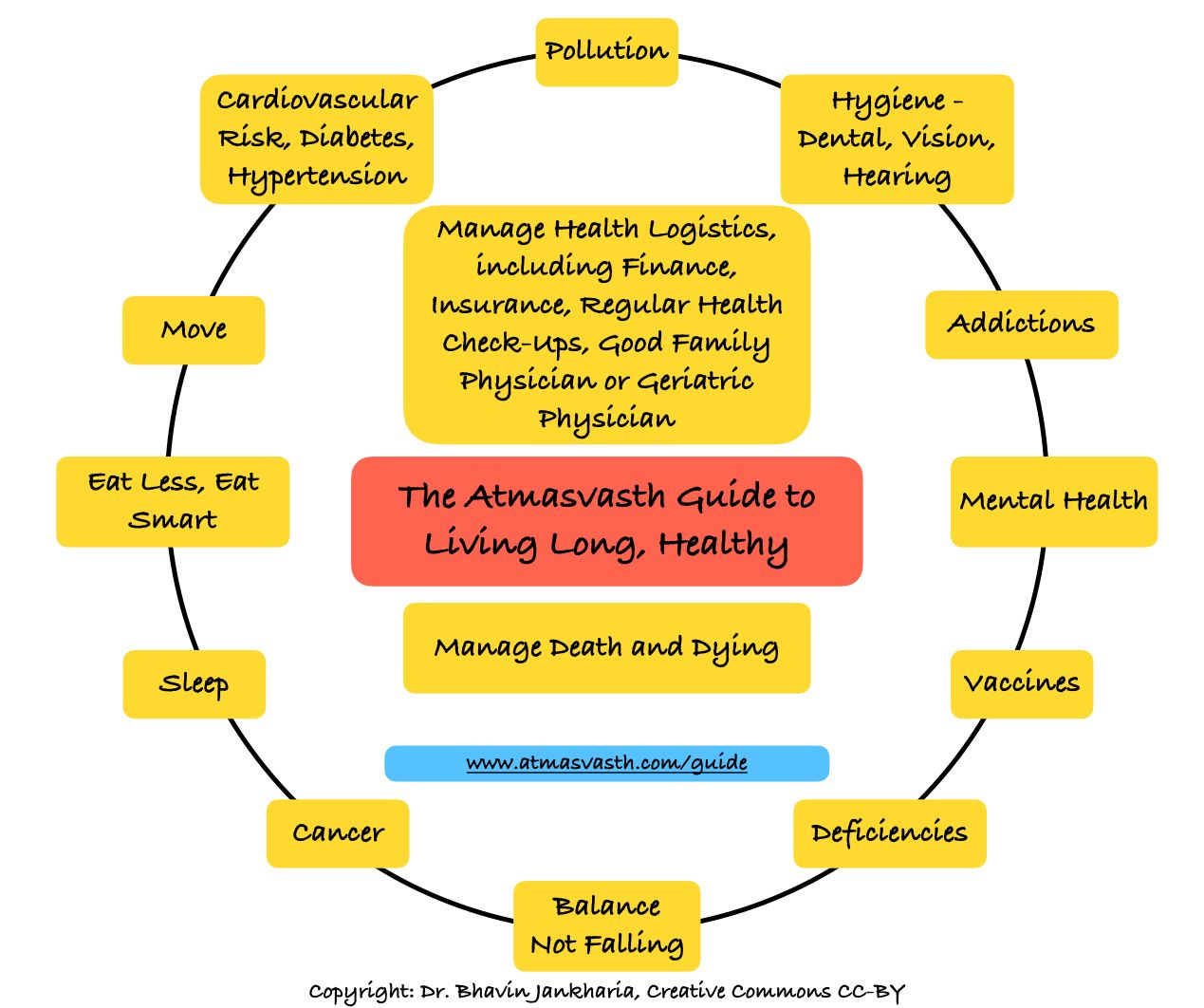
Audio
Video
The video is on YouTube.
Text
The Global Burden of Diseases (GBD) data for 2021 has just been published. As I mentioned in my piece titled “Longevity is Inevitable: Extended Healthspan is Not and Requires Effort” three weeks ago, we are all living longer, in every country and in every socio-economic strata because of a combination of factors that I discussed in that article and some earlier ones, starting with my piece on 21st Jan 2021 titled “Why We Live Longer and Better”.
The issue remains that while we are all living longer, a large percentage of the population is living diseased lives. What we therefore need is not just a long lifespan, but a long healthspan within that long lifespan.
So, what kills us? Those of us who are over 55-years of age in India?
Using data from the GBD [1], I asked ChatGPT to create a bar-chart to visualize the common causes of death. Covid-19 was the second common cause, but I have removed it, because it is a one-time anomaly and distorts the overall picture.
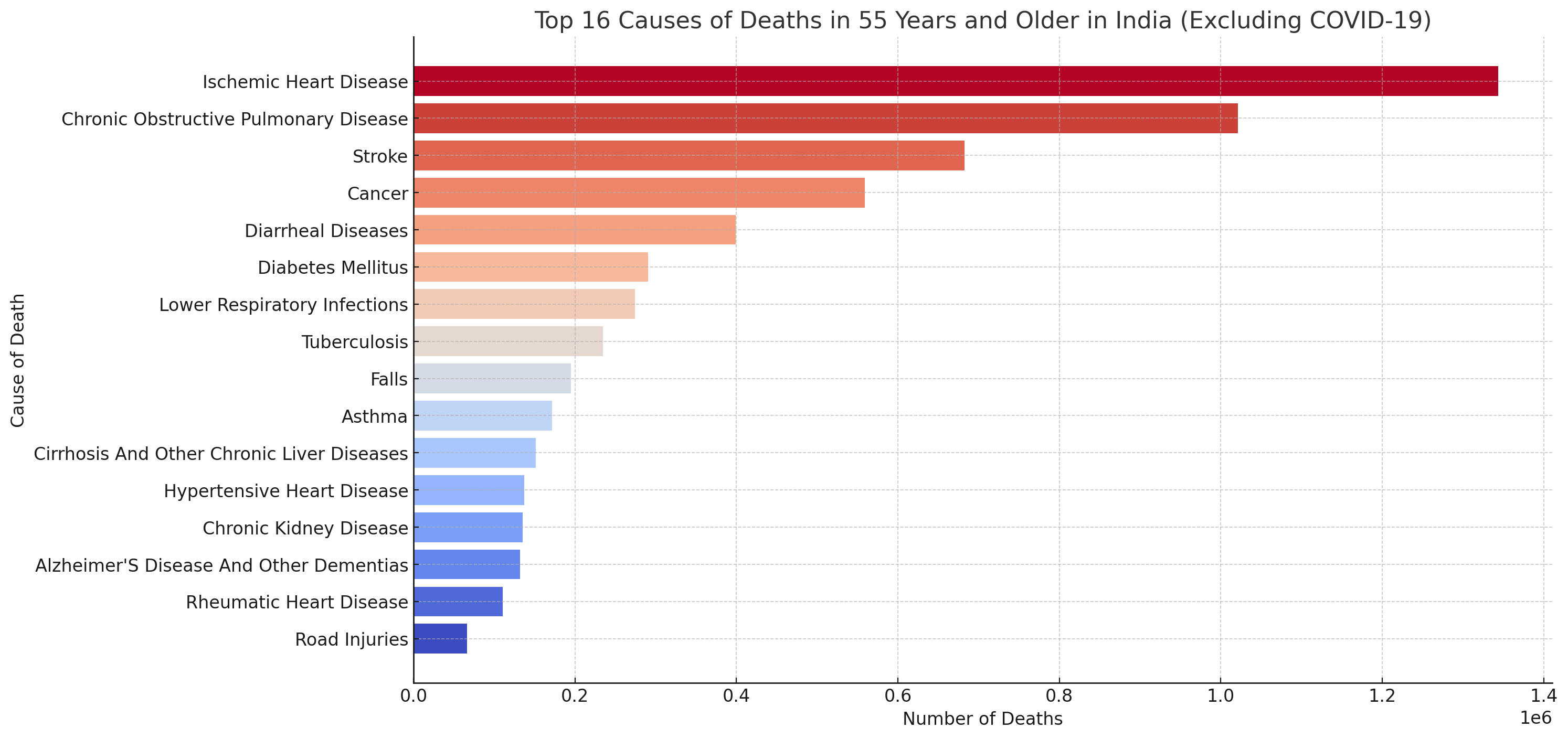
Not unsurprisingly, ischemic heart disease (heart attacks, heart failure) is by far the most common cause of death, followed by COPD, then stroke (brain attacks) and then cancers. In India we face the double whammy of both, infectious diseases of the majority, poor world that still kill (tuberculosis, lower respiratory infections and diarrheal diseases) and non-communicable diseases (NCDs) of the minority, rich world that are becoming more and more common even in India as the population ages and becomes prosperous.
Each of these conditions is a result of multiple risk factors. For e.g. ischemic heart disease and stroke can occur because of high blood pressure, poor dietary habits, smoking, diabetes and high LDL cholesterol. Chronic obstructive pulmonary disease (COPD) occurs in smokers and in non-smokers exposed to biomass gas as with wood chullahs in closed spaces.
So, what are these common risk factors causing these diseases and deaths? I again picked up data from the GBD [1] and asked ChatGPT to create a bar-chart visual.
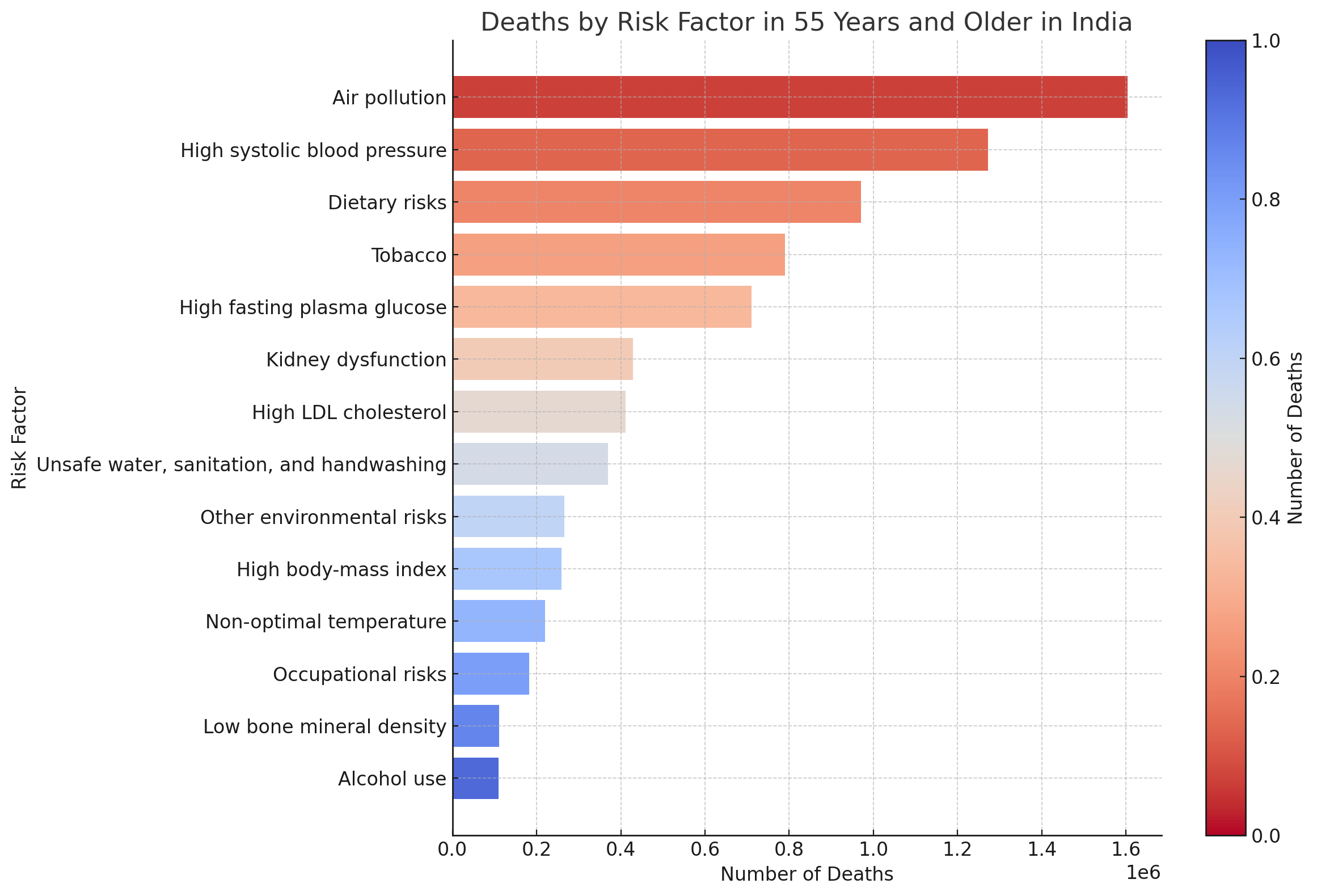
Some of these risk factors we can control, while others, we have to learn to live with.
For example, air pollution at No. 1, other environmental risks at No. 9 and non-optimal temperature at No. 11 are not within our individual control, though even with these, we can reduce their adverse effects and risks by staying indoors, using air purifiers, etc.
The rest of the risk factors can be controlled or completely removed. Let’s look at how you can do this.
Risk No 2 - High blood pressure: Measure your own blood pressure at regular intervals. If it is high (above 140), then see a doctor immediately and start medication to bring it down.
Risk No 3 - Dietary Risks: Eat sensibly with control over salt and sugar. Remember, a little extra weight is far better than being malnourished.
Risk No 4 - Tobacco: Do not smoke and do not chew tobacco.
Risk No 5 - High fasting plasma glucose: Measure your own fasting blood sugar and HbA1c and if high (>125 mg/dl or >6.4) then see a doctor to start measures to bring these under control.
Risk No 6 - Kidney dysfunction: If you have high blood pressure or diabetes, then you should check your kidney function with a serum creatinine level and if high, see a doctor to figure out what to do next. If you do have other risk factors for kidney dysfunction, then there is no need to test.
Risk No 7 - High LDL cholesterol: Measure your own lipid levels. If the serum LDL is above 100 mg/dl, see a doctor to figure out how to get the serum LDL to below 100 mg/dl.
Risk No 8 - Unsafe water, sanitation and handwashing: This is quite simple and straightforward. Wash hands before and after using the toilet and before and after eating and drink boiled or filtered water.
Risk No 10 - High body mass index: While the cut-off values are not specified, if you are overly obese (BMI > 35), then figure out ways of controlling your body weight. Remember that being fit and so-called “overweight” is far better than being unfit and so-called “normal weight”.
Risk No 13 - Low bone mineral density: Check your bone density at age 60 with a bone density study and institute measures to improve bone mass, if low. In any case, physical activity is the most important way to improve low bone mass.
Risk No 14 - Alcohol use: Do not drink alcohol, and if you do, then do so sensibly.

What we do matters. Over and above the measures I have just mentioned to reduce risk, there are other acts of commission that go a long way in further reducing the effects of these risk factors and the consequent occurrence of diseases that can kill you.
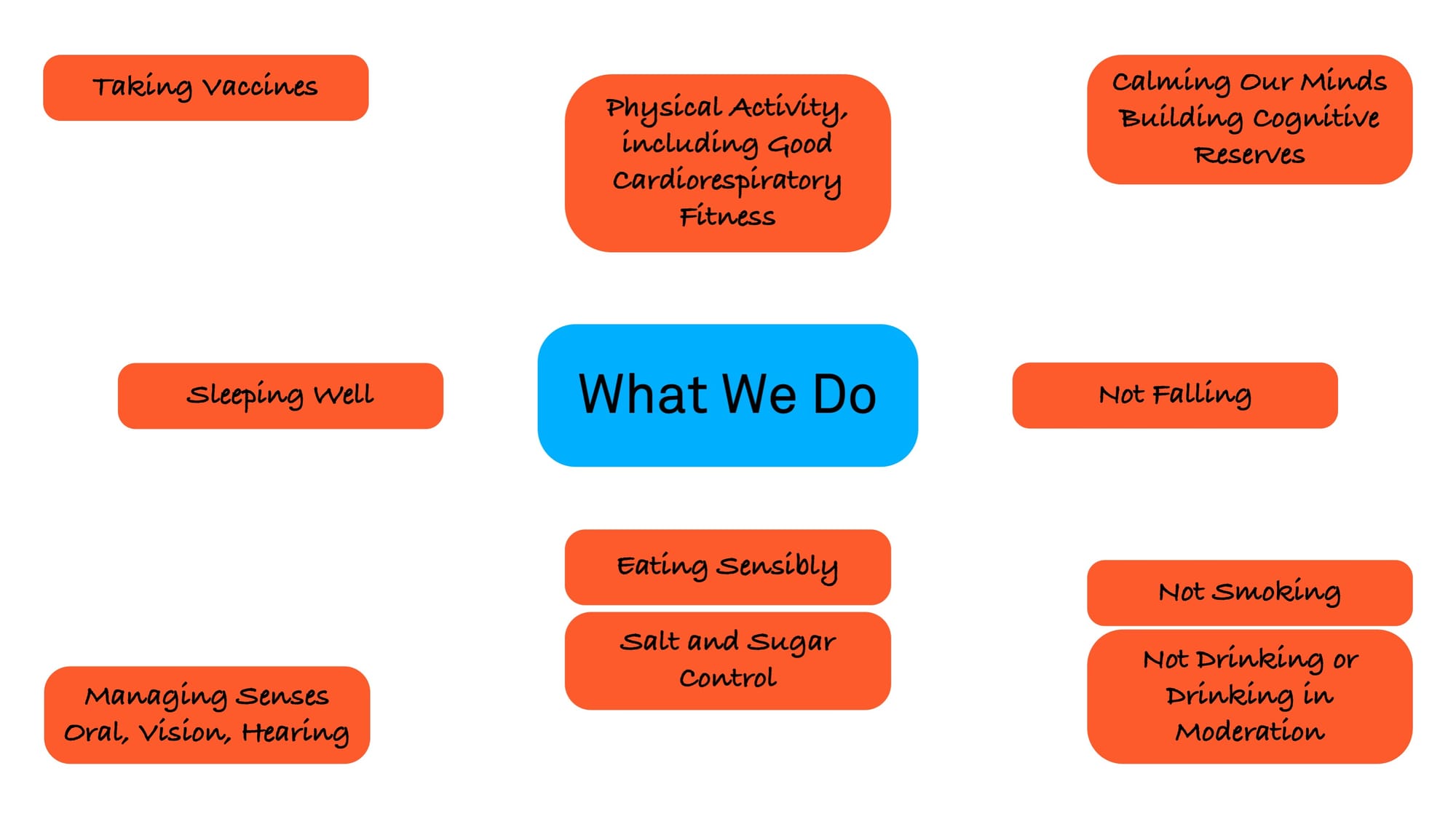
1. Physical activity - perhaps the single most important intervention to improve our healthspan and lifespan
2. Taking vaccines - to reduce the risk of respiratory and other infections.
3. Not falling - apart from improving bone density, making sure we institute measures in our lives and surroundings to reduce our risk of falling.
4. Sleeping well.
5. Managing your senses - oral, vision and hearing.
6. Calming your minds and building cognitive reserves.
Then there are a few other tests that can help reduce risk and/or pick up disease early, as I mentioned in my piece titled “The Ideal Annual Health Check-Up - Less is More” in Nov 2022.
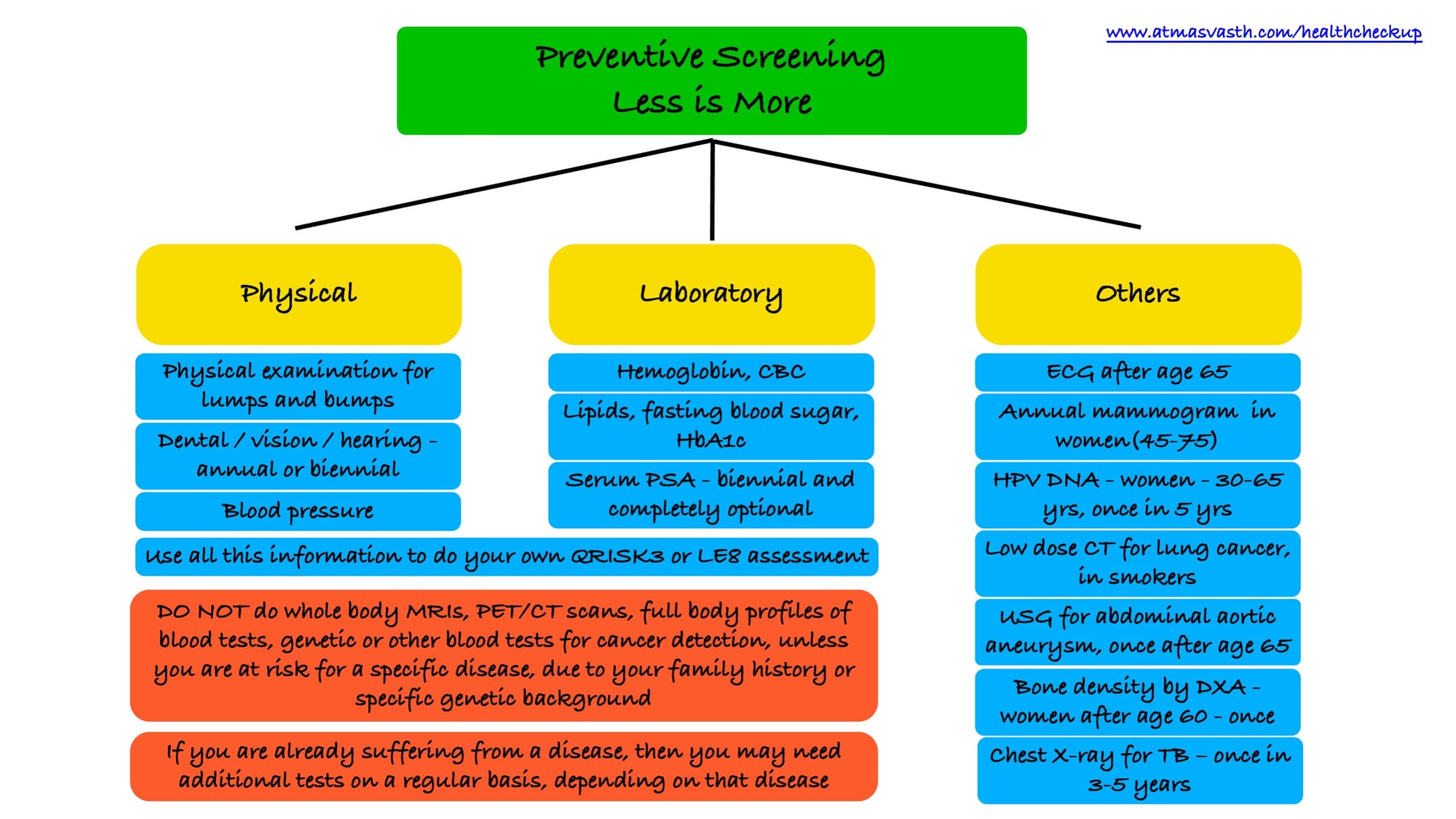
What does this mean for you and I? The common causes of death in all of us above 55 years of age, living in India are caused by a common set of risk factors, many of which are under our control and can be altered or ameliorated by acts of commission or omission.
Hence “Atmasvasth” - atma - self and svasth - health - it is in your hands to live long, healthy.
Footnotes
- Global Burden of Disease Collaborative Network. Global Burden of Disease Study 2021 (GBD 2021) Results. Seattle, United States: Institute for Health Metrics and Evaluation (IHME), 2022. Available from https://vizhub.healthdata.org/gbd-results/.
Atmasvasth Newsletter
Join the newsletter to receive the latest updates in your inbox.



